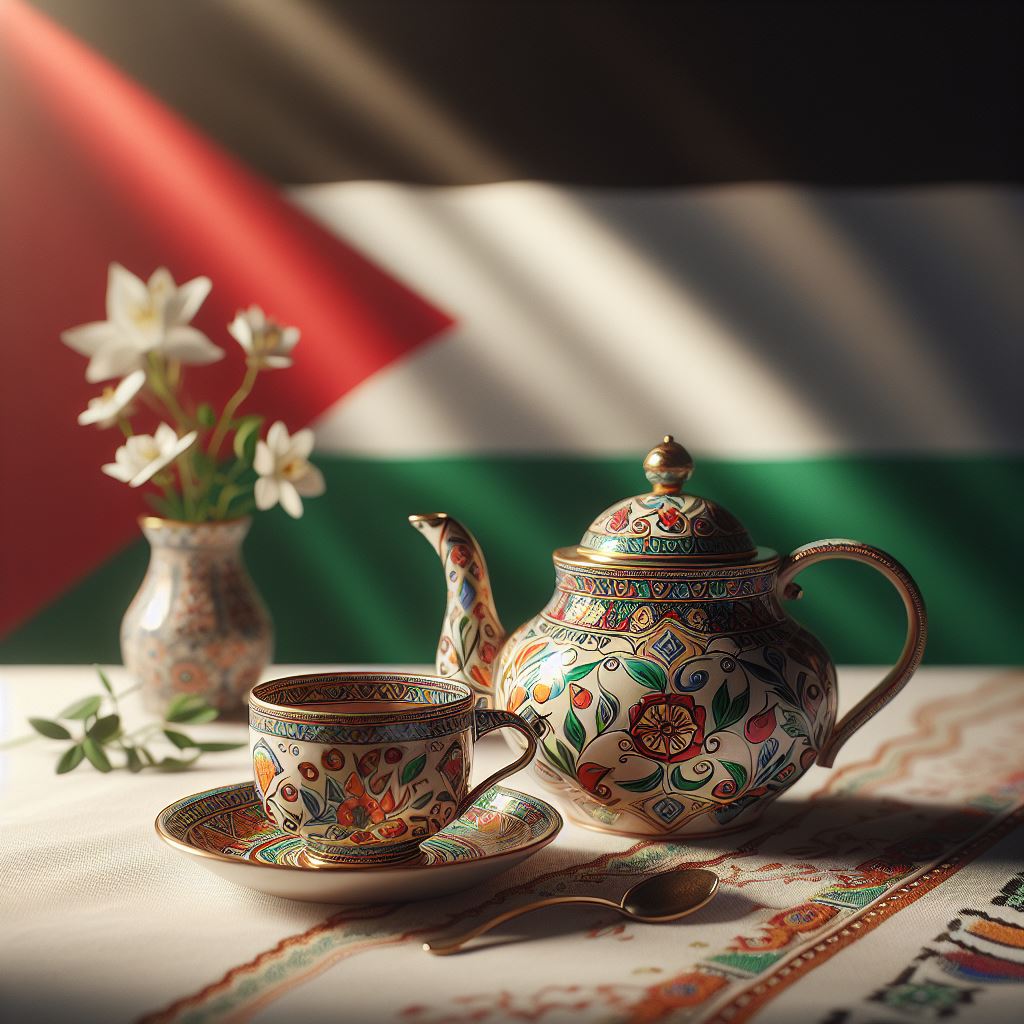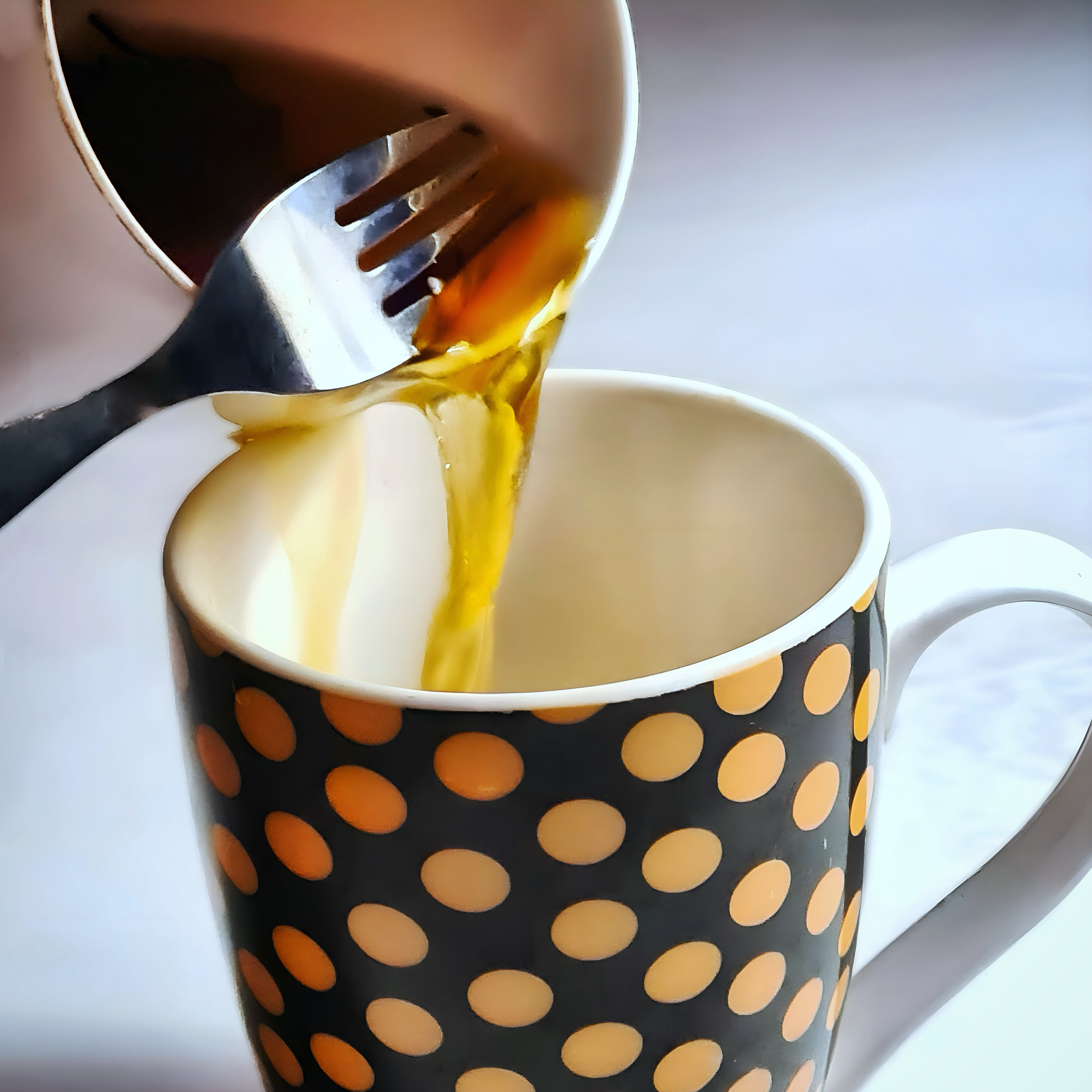Hello, tea enthusiasts! Welcome to our tea-filled adventure! Today, we embark on a journey to discover the enchanting world of mullein tea. Known for its soothing qualities, rich history, and surprising versatility, mullein tea is a hidden gem waiting to be explored. Join us as we dive into the secrets of brewing this delightful elixir and uncover the best places to find this remarkable herb.

The Marvels of Mullein
Unraveling the Mystery:
Mullein is a medicinal herb that has been used for centuries by various cultures and civilizations. It belongs to the genus Verbascum, which contains over 300 species of plants native to Europe, Asia, and Africa. The most common species of mullein is Verbascum thapsus, also known as common mullein, great mullein, or woolly mullein. This plant has a distinctive appearance, with large, fuzzy leaves and a tall, yellow flower spike that can reach up to 8 feet in height. Mullein has many names and nicknames, such as candlewick plant, flannel plant, velvet plant, torches, Aaron’s rod, and lady’s blanket, reflecting its diverse uses and properties.
The Health Benefits of Mullein Tea:
Mullein tea has been traditionally used to treat various disorders, especially respiratory problems like asthma, cough, and tuberculosis. It has also been applied to the skin for wounds, burns, and hemorrhoids, or used as ear drops for ear infections. Some people believe that mullein has anti-inflammatory, antiviral, antioxidant, antibacterial, and anticancer properties, but there is no good scientific evidence to support these claims. However, some studies have shown that mullein tea may have some benefits, such as:
- Reducing inflammation and mucus production in the lungs, thereby helping to relieve symptoms of bronchitis, asthma, and other respiratory conditions.
- Acting as an expectorant, meaning that it helps to loosen and expel phlegm from the airways.
- Providing relief for sore throat, tonsillitis, and hoarseness.
- Enhancing immune system function and fighting infections.
- Improving digestive health and alleviating diarrhea, constipation, and cramps.
- Promoting skin healing and reducing inflammation and pain in wounds, burns, and skin infections.
- Easing earache and inflammation caused by ear infections.
The Art of Brewing Mullein Tea

Gathering Your Ingredients:
To brew a delicious and soothing cup of mullein tea, you will need the following ingredients:
- Dried mullein leaves: You can use either the leaves or the flowers of the mullein plant, or a combination of both. The leaves have a mild, earthy flavor, while the flowers have a sweeter, floral taste. You can buy dried mullein leaves from reputable online sources, such as Mountain Rose Herbs or Starwest Botanicals, or you can harvest your own from the wild (more on that later).
- Water: Use fresh, filtered water for the best flavor and quality of your tea. Avoid using tap water that may contain chlorine, fluoride, or other impurities that can affect the taste and health benefits of your tea.
- Optional add-ins: You can enhance the flavor and benefits of your mullein tea by adding some honey, lemon, ginger, or other herbs of your choice. Honey can add sweetness and antibacterial properties, lemon can add acidity and vitamin C, ginger can add spiciness and anti-inflammatory properties, and other herbs can add variety and synergy to your tea. Some popular herbs that go well with mullein are lavender, chamomile, mint, rosemary, and sage.
Step-by-Step Mullein Tea Brewing Guide:
Follow these simple steps to brew a perfect cup of mullein tea:
- Boil water in a kettle or a pot over high heat. You will need about one cup of water for each teaspoon of dried mullein leaves.
- Place one to two teaspoons of dried mullein leaves in a teapot, a tea infuser, or a tea ball. You can also use a coffee filter or a cheesecloth to make a DIY tea bag. If you are using mullein flowers, use about one tablespoon per cup of water.
- Pour the boiling water over the mullein leaves and cover the teapot or the infuser with a lid. Let the tea steep for 10 to 15 minutes, depending on how strong you like your tea. The longer you steep, the more flavor and benefits you will extract from the mullein leaves.
- Strain the tea through a fine-mesh strainer, a coffee filter, or a cheesecloth to remove any leaves or flower particles. This is important because mullein leaves have tiny hairs that can irritate your throat or mouth if you drink them. You can also use a French press to brew and strain your tea in one device.
- Enjoy your mullein tea as it is, or add some honey, lemon, ginger, or other herbs to your liking. You can drink up to four cups of mullein tea a day to soothe your throat, lungs, and skin.
Creative Variations:
If you want to spice up your mullein tea experience, you can try some of these exciting variations and blends:
- Mullein and lavender tea: Add a teaspoon of dried lavender flowers to your mullein tea for a relaxing and aromatic brew. Lavender can help calm your nerves, reduce stress, and improve your sleep quality.
- Mullein and chamomile tea: Add a teaspoon of dried chamomile flowers to your mullein tea for a soothing and comforting brew. Chamomile can help ease anxiety, depression, and insomnia, as well as reduce inflammation and pain.
- Mullein and mint tea: Add a few fresh or dried mint leaves to your mullein tea for a refreshing and invigorating brew. Mint can help improve your digestion, relieve nausea, and freshen your breath.
- Mullein and rosemary tea: Add a sprig of fresh or dried rosemary to your mullein tea for a stimulating and energizing brew. Rosemary can help boost your memory, concentration, and mood, as well as fight infections and inflammation.
- Mullein and sage tea: Add a teaspoon of dried sage leaves to your mullein tea for a cleansing and healing brew. Sage can help detoxify your body, regulate your hormones, and protect your skin and hair.
Unveiling the Mullein Tea Mystique

Mullein in Folklore and Traditions:
Mullein has a rich and fascinating history that spans across cultures and continents. Here are some of the legends, beliefs, and historical uses associated with this herb:
- In ancient Greece, mullein was used to treat lung diseases, such as tuberculosis and pneumonia, and was also used as a lamp wick, due to its flammability. The Greek botanist Dioscorides praised mullein as a remedy for respiratory ailments in his famous work De Materia Medica. Some sources also claim that mullein was the plant that Odysseus used to protect himself from Circe’s magic in Homer’s Odyssey.
- In medieval Europe, mullein was associated with protection and warding off evil spirits. The dried stalks of mullein were used as torches, and the tall spikes of flowers were believed to act as beacons, guiding travelers safely through the night. Mullein was also used in spells and charms, and was sometimes called “witch’s candle” or “hag’s taper”.
- In Native American traditions, mullein was used for ritualistic purposes, as well as for medicinal and practical purposes. Some tribes used mullein to make smoke signals, fire starters, or torches. Others used mullein to treat earaches, coughs, colds, and skin problems. Some tribes also believed that mullein could attract fairies and help communicate with the spirit world.
- In modern times, mullein has been used as a herbal remedy for various conditions, such as asthma, bronchitis, sore throat, ear infections, diarrhea, hemorrhoids, and wounds. It has also been used as a natural dye, a cosmetic ingredient, and a craft material.
Beyond the Teacup: Alternative Uses
Mullein is not only a wonderful tea ingredient, but also a versatile herb that can be used for many other purposes. Here are some of the alternative uses of mullein that you can try:
- Mullein oil: You can make your own mullein oil by infusing dried mullein flowers in a carrier oil, such as olive oil or almond oil, for several weeks. Mullein oil can be used as a natural remedy for ear infections, skin infections, wounds, burns, and insect bites. You can also use mullein oil as a massage oil, a moisturizer, or a hair conditioner.
- Mullein salve: You can make your own mullein salve by melting beeswax and adding mullein oil and essential oils of your choice. Mullein salve can be used as a topical treatment for skin problems, such as eczema, psoriasis, acne, and rashes. You can also use mullein salve as a lip balm, a hand cream, or a foot cream.
- Mullein poultice: You can make your own mullein poultice by soaking fresh or dried mullein leaves in hot water and applying them to the affected area. Mullein poultice can be used as a natural remedy for joint pain, gout, arthritis, and sprains. You can also use mullein poultice as a facial mask, a compress, or a wrap.
Where to Find Mullein

Foraging Adventures:
One of the best ways to find mullein is to go foraging in the wild. Mullein grows in a variety of habitats, such as fields, roadsides, wastelands, and forests. It prefers sunny and dry locations, and can tolerate poor and rocky soils. Mullein is easy to identify, thanks to its distinctive shape, size, and texture. Here are some tips for responsibly foraging mullein in the wild:
- Look for mullein plants that are healthy, abundant, and free of pesticides, herbicides, or pollutants. Avoid picking mullein from private property, protected areas, or busy roads.
- Harvest only what you need, and leave enough for the plant to regenerate and for other animals and insects to enjoy. Do not uproot the whole plant, but cut only the leaves or flowers that you want to use.
- Use clean and sharp scissors or a knife to cut the mullein leaves or flowers, and place them in a paper bag or a basket. Do not use plastic bags, as they can trap moisture and cause mold or rot.
- Wash the mullein leaves or flowers thoroughly, and dry them in a well-ventilated area, away from direct sunlight. You can also use a dehydrator or an oven to speed up the drying process.
- Store the dried mullein leaves or flowers in a glass jar, a paper bag, or a cotton pouch, and label them with the name, date, and location of harvest.
Foraging mullein can be a fun and rewarding activity, as you get to connect with nature and appreciate the beauty and bounty of this amazing herb. You also get to enjoy the satisfaction of finding and preparing your own ingredients for your mullein tea and other products.
Nurseries and Herbal Shops:
If you prefer the convenience of buying mullein plants or dried leaves, you can also find them in nurseries or herbal shops. Here are some suggestions for finding reputable sources of mullein:
- Look for nurseries or herbal shops that specialize in organic, sustainable, and ethical practices. You can also check online reviews, ratings, and testimonials from previous customers to get an idea of their quality and service.
- Ask the staff or the owner about the origin, cultivation, and harvesting methods of their mullein products. You can also inquire about the freshness, potency, and purity of their mullein leaves or flowers.
- Compare the prices, quantities, and varieties of mullein products offered by different nurseries or herbal shops. You can also look for discounts, deals, or coupons to save some money.
- Choose the mullein products that suit your needs and preferences, and check the labels for the ingredients, expiration dates, and storage instructions. You can also ask for samples or recommendations from the staff or the owner.
Some of the online options for buying mullein plants or dried leaves are:
- [The Growers Exchange]: This online nursery offers a variety of live mullein plants, such as common mullein, Greek mullein, and white mullein. You can order the plants in different sizes and quantities, and they will be shipped to your doorstep in eco-friendly packaging.
- [Bulk Apothecary]: This online herbal shop offers organic dried mullein leaves and flowers, as well as mullein oil and mullein capsules. You can buy the products in bulk or in smaller packages, and they will be delivered to your address in secure and discreet packaging.
- [Amazon]: A cheap and convenient source for mullein tea products.
Conclusion
As we bid farewell to our exploration of mullein tea, remember that the world of tea is a boundless realm, brimming with endless possibilities. Embrace the magic of mullein, experiment with flavors, and share the joy of this exquisite brew with fellow tea enthusiasts. May your teacups always be filled with warmth, comfort, and the wonders of nature’s herbal treasures. Thank you for reading our blog post on how to make mullein tea, and we hope you enjoyed it as much as we did. Happy brewing!
Discover More Tea-Related Articles:
- How to Use a Teapot Like a Pro: A Complete Guide
- Pine Needle Tea: Warm Up With The Ultimate Natural Cup
- Corn Silk Tea: How to Make One of the Most Unique, Healthy Teas
- Teh Tarik: Malaysian Pulled Tea & How to Make It
- Tea for Anxiety: The Best Natural Remedies For Anxiety
Sources:
- Turker, A. U., & Camper, N. D. (2002). Biological activity of common mullein, a medicinal plant. Journal of ethnopharmacology, 82(2-3), 117-125.
- Turker, A. U., & Gurel, E. (2005). Common mullein (Verbascum thapsus L.): recent advances in research. Phytotherapy Research: An International Journal Devoted to Pharmacological and Toxicological Evaluation of Natural Product Derivatives, 19(9), 733-739
- Mountain Rose Herbs. Mullein Leaf.
- Starwest Botanicals. Organic Mullein Leaf C/S.
- Healthline.com – Mullein Tea





Leave a Comment